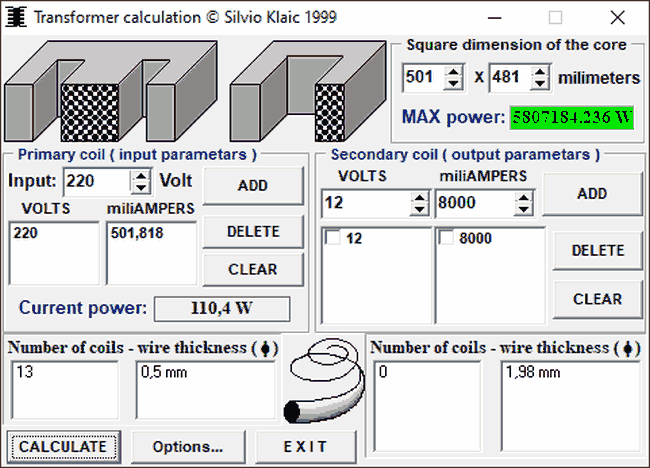

Then, the magnetizing branch reactance, X O= V O / I m Magnetizing component of no load current, I m = I O sin Φ OĬore loss component of no load current, I m = I O cos Φ O Once the power factor is obtained, the no load component currents are determined as: The no load power factor, Cos Φ O = W O/V OI O The no load shunt parameters are calculated from the OC test as Since the iron or core losses are at rated voltage, the power input is drawn to supply the iron losses by the transformer under no load. In OC test, transformer is operated at rated voltage at rated frequency so the maximum loses will be the flux in the core. Thus, the copper loss in the primary winding is negligible. We know that, when the transformer is on no load, the no load current or primary current is very small, typically 3 to 5 percent of the rated current value. From this test, we get rated voltage V O, input or no load current I O and input power W O. At this rated voltage, the ammeter and wattmeter readings are to be taken. When a single phase supply is given to the transformer, the rated value of the primary voltage is adjusted by varying the variac. The OC test arrangement of a transformer is shown in below figure: The primary side voltmeter reads the applied voltage to the transformer, ammeter reads the no load current, wattmeter gives the input power and the variac used to vary the voltage applied to transformer so that rated voltage is applied at rated frequency. The secondary side or HV side terminals are left open and in some cases a voltmeter is connected across it to measure the secondary voltage.

The open circuit (OC) test is carried out by connecting LV side (as primary) of the transformer to the AC supply through variac, ammeter, voltmeter and wattmeter instruments. Since this test is carried out without placing any load, this test is also named as No Load Test. This test results the iron losses and no load current values, thereby we can determine the no load branch parameters with simple calculations.Īs the name itself indicates, secondary side load terminals of the transformer are kept open and the input voltage is applied on the primary side. This test is performed to find out the shunt or no load branch parameters of equivalent circuit of a transformer. Open Circuit or No Load Test on Transformer
#Output transformer calculator program how to
This tutorial enumerates how to perform these tests, how determine the equivalent parameters from test data and significance HV or LV side in which the calculation to be performed.

This method of finding the parameters of a transformer is called as an Indirect Loading Method. Without actually loading the transformer, these two assessed tests give the test results, which are used to determine the equivalent circuit parameters.īy these parameters, we can easily predetermine the efficiency and regulation of the transformer at any power factor condition as well as at any load condition. These circuit parameters are supplied in terms Open Circuit (OC) and Short Circuit (SC) test data of a transformer. It is possible to predict the performance of a transformer at various levels of load by knowing all the equivalent circuit parameters. Open Circuit or No Load Test on Transformer.


 0 kommentar(er)
0 kommentar(er)
